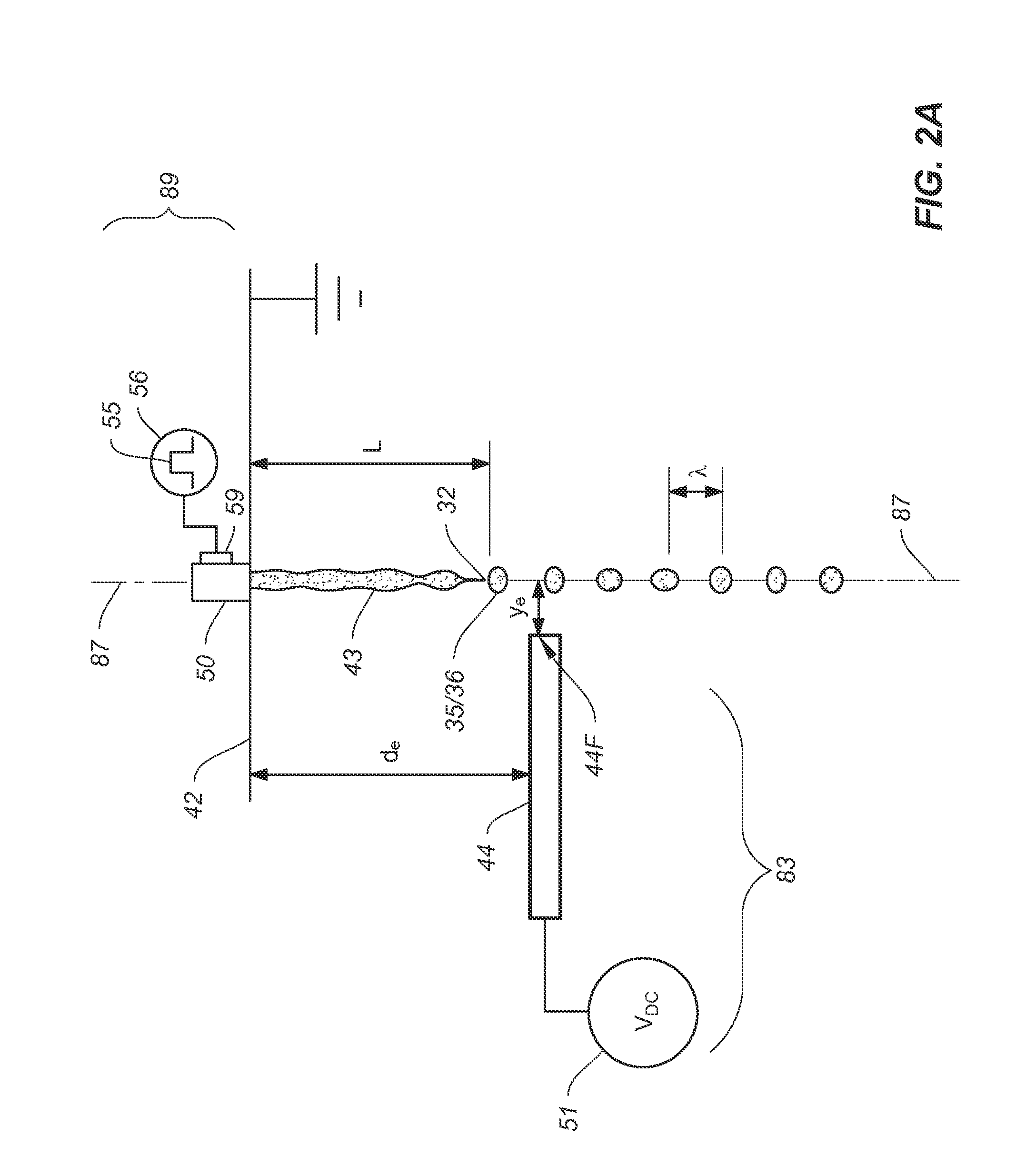Drop placement error reduction in electrostatic printer
an electrostatic printer and drop placement technology, applied in printing and other directions, can solve the problems of reducing the minimum spacing between adjacent electrodes, reducing the resolution of printed images, and reducing the drop placement error. the effect of reducing the drop placement error and increasing the print margin
- Summary
- Abstract
- Description
- Claims
- Application Information
AI Technical Summary
Benefits of technology
Problems solved by technology
Method used
Image
Examples
first embodiment
[0069]In order to selectively print drops onto a substrate, catchers are utilized to intercept non-print drops 36 which can then be sent to the ink recycling unit 15. FIGS. 4A-4C show a first embodiment in which a grounded catcher 47 positioned below the charge electrode 44 intercepts drops traveling along the non-print drop path 38 while allowing print drops 35 traveling down the print drop path 37 to contact the recording media 19 and be printed. In the embodiments shown in FIGS. 4A-4C the non-print drops are highly charged, deflected, captured by catcher 47 and recycled, while the print drops have a relatively low charge and are relatively undeflected and are printed on recording media 19. In FIG. 4A the breakoff length 32 of print drops 35 is Lp which is less than the charge electrode 44 to nozzle plane distance de so that a relatively low amount of charge is transferred to the print drops 35 as they break off. The print drops are not deflected by the grounded catcher 47 and the...
second embodiment
[0074]FIGS. 5A-5C shows cross sectional viewpoints through a liquid jet of this invention in which relatively non-deflected non-print drops 36 are collected by catcher 67 while deflected print drops 35 are allowed to pass by the catcher and be printed on recording media 19. In this embodiment print drops 35 are highly charged and deflected away from a catcher 67 as they travel along print drop path 37 allowing the print drops 35 to contact a recording media 19 and be printed. In this case the catcher 67 intercepts less charged non-print drops 36 traveling along the relatively undeflected non-print drop path 38. FIG. 5A shows a sequence of drops being generated in all print condition while printing at the maximum recording media speed, FIG. 5B shows a sequence of drops being generated in a no print condition and FIG. 5C shows a sequence of drops being generated in a normal print condition in which some of the drops are printed and some of the drops are not printed. As shown in FIG. 5...
PUM
 Login to View More
Login to View More Abstract
Description
Claims
Application Information
 Login to View More
Login to View More - R&D
- Intellectual Property
- Life Sciences
- Materials
- Tech Scout
- Unparalleled Data Quality
- Higher Quality Content
- 60% Fewer Hallucinations
Browse by: Latest US Patents, China's latest patents, Technical Efficacy Thesaurus, Application Domain, Technology Topic, Popular Technical Reports.
© 2025 PatSnap. All rights reserved.Legal|Privacy policy|Modern Slavery Act Transparency Statement|Sitemap|About US| Contact US: help@patsnap.com



